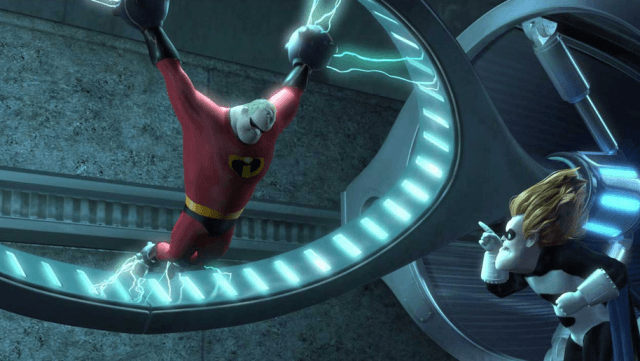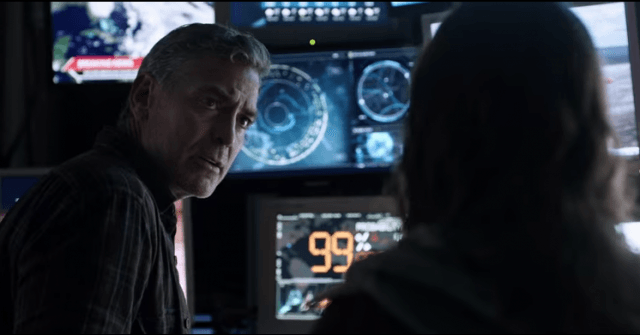http://www.defensenews.com/
By Aaron Mehta
2:50 p.m. EST March 7, 2015
WASHINGTON
— The US Air Force is about to start a deep-dive process that will
eventually decide what technologies and capabilities it will fund to
ensure air dominance in the world of 2030.
And while that includes
the potential for a sixth-generation fighter, top service officials
continue to stress that the result of the process will likely be a
family of systems approach.
Maj. Gen. Tim Ray, director of Global
Power in the service's acquisition realm, and Maj. Gen. Paul Johnson,
director for Operational Capability Requirements, told Defense News that
the Air Force will shortly stand up a team to begin researching these
decisions.
The Next-Generation Air Dominance program will be the
first pilot program for the Air Force's new Capability Collaboration
Team (CCT) structure, part of a broader strategic process unveiled by
Gen. Mark Welsh, Air Force chief of staff, at last month's Air Force
Association convention in Orlando.
The
CCT comprises a number of operational, scientific and technical experts
from an array of backgrounds, including the Defense Advanced Research
Projects Agency (DARPA), the Air Force Research Labs and the major
commands. The group will explore in depth various options that could
matter in the future, before putting out a product with two components.
The
first is a list of technologies the CCT has decided will be needed for
air superiority in 2030. The second is a road map for how to achieve
those technologies.
For example, the CCT could decide that
directed energy weapons are a key part of the strategy. It will present
to the chief and secretary a guide for what areas of directed energy
need investment, how those investments should be prioritized, and
perhaps most importantly, a timeline for when those investments would
need to pay off in order to be fielded by 2030.
Johnson said the
goal is to be able to guide limited research and development funds from
being spread to many projects — with the hope that one works out —
toward being focused on a small handful of technologies.
"It's not
about a decision to start a program, to go do x, y and z," Johnson
said. "It's not a decision to go build the next-generation fighter. It's
a set of decisions about what more do we want to learn, how do we want
to learn it, and how fast do we want to learn it? It's 'out of this set
of technologies, we want to chase these four.' "
Timewise, the CCT
will begin meeting in the next few weeks. It will spend the next three
years researching technologies before presenting a final product in
2018.
The Pentagon is littered with well-intentioned studies into
new technologies. What makes this different, Ray said, is the focus on
finding actionable items and then creating guidelines to make them real.
"This
isn't a slush fund," Ray said. "It's not just. 'hey I'm going to go
solve cold fusion, give me a couple of years and I'll get back to you.'
It's 'how do I get that power supply correct of that kind of pod to do
directed energy,' or 'how do I get this signature from this range to
that range?' "
For that to work, Ray said, industry must play a
critical role. That fits with a promise from Welsh, who in Orlando
pledged that industry would be brought in earlier in the technology
development process.
"[Right now] you have to wait until we kind
of make up our mind and give you a plan, so you can't energize your
resources, your thinking, to help us get ahead of this curve," he said
at the conference. "We're not talking to you about it. We must do that.
You should be part of this transition planning. You should be part of
the [process] in developmental planning."
At the same time, Ray
warned that industry needs to be prepared for a shift away from the days
of one prime controlling everything from development through
production.
"We have a lot of known players and we want to hear
what they have to say. The interesting part will be if we get out of the
program business, how many more voices will we get that aren't the
prime players?" Ray asked rhetorically. "Technology is moving way too
fast for us to lock down a program and say it's all got to go through
one guy."
That may lead to more focus on studying and prototyping technology without a guarantee of future production, Johnson said.
"When
I bring industry in here, industry is understandably interested in what
the program is going to look like, which is not my conversation at this
point," Johnson said. "So I've got to make it workable so when I get
ready to do some experimentation or prototyping, that industry is
willing to participate in that, knowing that at the end of the day there
may not be anything after that."
Rebecca Grant of IRIS Research
said opening another avenue of communication with industry is a net
positive for the service. And while she said the CCT brings "all the
right ingredients" together, she said the service needs to stick with
the concept to make it really work.
"The best technology
development stories come out of this mix of people and insights," she
said. "What we don't know is if you can get everyone together in a room
and just [have] the big insights. Like exercise, you need do this on a
regular basis and go for the small gains as well."
Mark Gunzinger,
a former service official now with the Center for Strategic and
Budgetary Assessments, called the CCT a "great idea" that could "help
accelerate the transition of new, potentially game-changing technologies
into the program of record." However, he also offered a word of
caution.
"Beginning these efforts by 'researching new
technologies' may take teams down the path of trying to figure out how
emerging technologies could help airmen improve how they operate today,"
he said. "I think it's also important to challenge current operational
concepts and think through how new technologies could enable airmen to
operate very differently in the future."
Hints of the Future
Both generals stressed that the goal is to allow the CCT to be as open as possible as it explores future concepts.
"We
can't be prescriptive. We do have to be open," Ray said. "We have to
show them what's going on in the intel community with data management,
with cyber, with space, so they can begin to look at the tools and what
they mean and the implications of those things. It's a broader
exposure."
However, the men did drop a few hints as to what technologies they foresee the CCT considering.
Johnson
expressed confidence that the 2030 solution would not involve just the
development of a heavily advanced fighter with all-onboard capability,
noting "there is every likelihood it's going to be some sort of family
of systems, and hopefully it will be a mix of old and new.
"I
would have every expectation that it will probably be 'programs' —
that's one man's opinion," he added. "Sensors, weapons, the whole
collection of things."
That family could include a mix of
modernized versions of legacy systems in use today, working hand-in-hand
with new systems that will be online by 2030. The CCT will be on the
lookout for what Johnson called "quick wins," things like experimental
sensor upgrades that could be put onto current systems relatively
quickly.
The CCT will also look at how to build in growth for
potential future technologies, Ray said, noting "we certainly realize we
need to build in more inherent adaptability in what we do."
That
includes looking at how to build in excess power and create space for
any new system, to make sure there is the ability to add newer
technologies as they come along.
The generals casually mentioned
directed energy and signature reduction as other technologies that will
likely be looked at, which isn't news to anyone who has followed the
talk about a potential next-generation fighter.
Grant highlighted directed energy as an area that could really gain from the CCT model.
"The
time is right for demonstrating progress in directed energy," she said.
"I think all future systems from here on out, we're going to have a
discussion in directed energy on those systems. We'll be talking about
it a lot more."
While the focus now is on the family of systems,
there is confidence in industry that a major part of that will involve a
sixth-generation fighter.
The
Air Force isn't alone in looking at next-gen air dominance
technologies. The Navy has said it is looking at a next-gen fighter to
replace the F/A-18 and complement the F-35C, and Pentagon acquisition
chief Frank Kendall has launched the Aerospace Innovation Initiative, a
DARPA-led development program for X-planes to test technologies and
concepts.
Johnson said he is in regular contact with his
counterpart in the Navy, and Ray added that the lead Air Force
representative to the initiative will also be part of the CCT.
That
should create a cross-cutting of technologies between the three sides,
including, perhaps, letting the CCT test some of the technologies on a
prototype plane, then bring those results back into its research.
Industry, meanwhile, is gearing up for what could be a lucrative contract.
Northrop
Grumman has already stood up a pair of teams, dedicated to the Navy and
Air Force programs respectively, while Boeing has quietly released
several mock-ups of future fighter concepts.
Orlando Carvalho, the
head of Lockheed Martin's aerospace division, told Defense News that
the company's SkunkWorks division is working on a design, but said that
work is a natural outgrowth from the company's previous developments.
"When
it comes to next-generation air dominance, that work for us is a
continuum," he said. "We don't discretely stand up teams, disband teams
around that — that's what we do at the SkunkWorks, and it's a
continuum."
Carvalho said the Pentagon has "definitely"
communicated with companies about what future threat scenarios, tactics
and requirements may be.
Both Ray and Johnson are sympathetic to
industry's desire to know what a next-generation fighter may look like,
but insist they need this structure to prevent the proverbial cart from
leading the horse.
"The automatic question [from industry] is when
do we do the AOA [analysis of alternatives]? I don't want to hear about
an AOA," Ray said. "I want to do some learning first. I want to know
what the alternatives are before I begin to analyze those alternatives.
Right now we don't even know what the alternatives are."
http://www.ibtimes.com/
The Sukhoi PAK FA fighter jets will reportedly go into
mass production in 2017.
Wikimedia Commons
Russia’s fifth-generation Sukhoi T-50 PAK FA fighter jet is
equipped with an advanced defense system that can neutralize an enemy
plane’s stealth capability, a report said Friday, citing a unit of
Russian state corporation Rostec. The planes, which will go into mass
production in 2017, are claimed to be capable of outperforming the F-22
and fifth-generation F-35 fighters of the U.S. Air Force.
The T-50 PAK FA fighter jet will be built with composite materials,
and come with advanced electronic systems and engines to ensure the
plane can stay mostly undetected by radars and other optical and
infrared technologies, Russia’s
Sputnik News reported.
“The PAK FA is already to some degree a flying robot, where the
aviator fulfils the function not only of pilot, but is actually one of
the constituent parts of the flying apparatus,” Sputnik News quoted
Vladimir Mikheyev, the deputy head of the Concern Radio-Electronic
Technologies (KRET), a unit of Rostec, as saying.
KRET has created an advanced internal navigation system for the T-50
PAK FA jet, which autonomously processes navigation and flight
information. The system can also determine position and motion
parameters in situations when there is no satellite navigation, and make
contact with GLONASS, Russia’s satellite-based navigation system, which
works alongside the Global Positioning System.
The Russian air force will get 55 Sukhoi T-50 PAK FA jets by 2020 and
the aircraft will replace the country’s Sukhoi Su-27 fourth-generation
fighter jet. Russia is also
expected to buy
at least 50 Tupolev Tu-160 “Blackjack” heavy strategic bombers, which
will be produced simultaneously with the country’s new bomber, called
PAK DA.




















